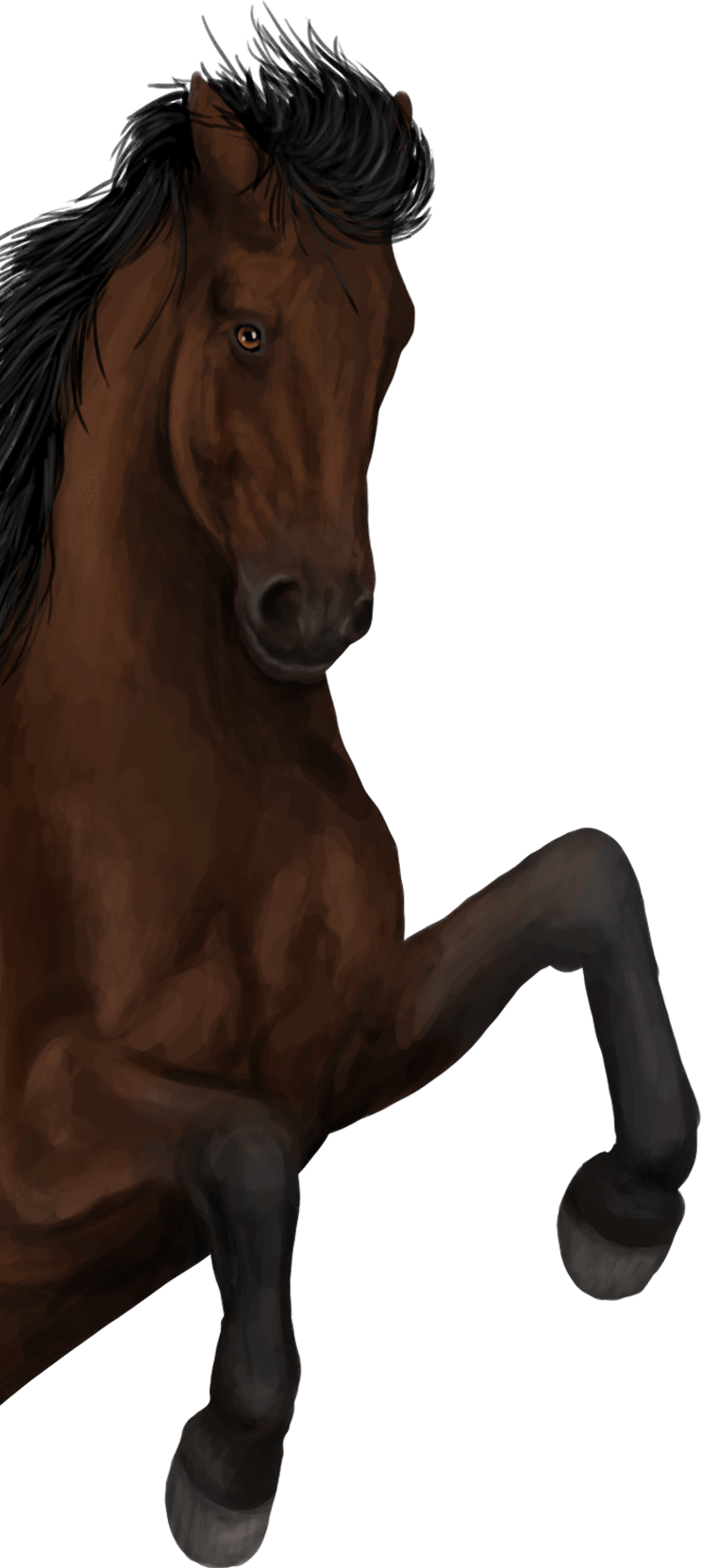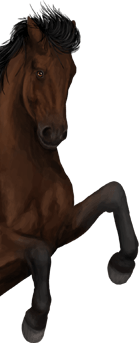This blog post was written by: HolyCow
There are lots of horses in the world that all have different lives. Some help in farmwork, some help their riders achieve their riding ambitions, some help people to trust again. And some horses inspire us, just by existing! The rubric ‘Life of…’ aims to give us a general look into the lives of different kinds of horses.
Life of a Mustang
Today, we’re going to the United States of America. The sun is just rising when the group of horses moves across the land. These horses include a 4-year-old stallion. Although some of his peers can be found on camera so often that they have been named, it goes without saying that with 70,000 of his kind, most remain anonymous. A statistic, a number, about which there is increasing debate. At the same time, they are also a symbol of the free wild west. Not that our dear Mustang is at all aware of that. No, he has other things on his mind. Despite the leading stallion getting all the credit, all the glory, Mustang also plays an important role as a lieutenant!
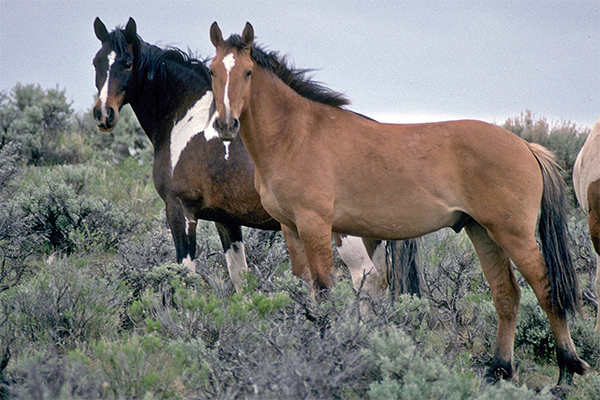 Our protagonist: Mustang, together with one of his peers. Source: Bureau of Land Management, CC BY 2.0 Attribution 2.0 Generic, via Wikimedia Commons.
Our protagonist: Mustang, together with one of his peers. Source: Bureau of Land Management, CC BY 2.0 Attribution 2.0 Generic, via Wikimedia Commons.
During the day
During the day, there is plenty of work to be done. He regularly trots around the herd, looking for possible dangers. Despite the fact that Mustang and his kind have no natural enemies in the area where they live, there is plenty to observe. An already elderly stallion, for example. The old stallion is not part of a group. He no longer has a family, and no harem. He does not like the youngsters in the so-called bachelor groups. He just runs after some harems, and seems to have little interest in the mares anymore. Up ahead, however, is a young stallion, who seems to be a lot more ambitious. Of course, no one is allowed to take away any of the mares in the group.
The lead stallion of the harem has also spotted the young stallion. As if by agreement, a division of labour takes form. It becomes obvious why the leading stallion keeps Mustang with him, despite the fact that Mustang as a stallion is also a potential rival. While the lead stallion herds his mares to a safe place, Mustang confronts the young stallion. It starts with standing, and looking at each other. There is some stomping, prancing and biting. The young stallion is inexperienced, no match for Mustang, and eventually drops off.
When the leading stallion is alone, he must rely entirely on his mares during the confrontation. Where there is one harem, there are often several around, each with their own lead stallions, who won't say no to an extra mare either. Although older, experienced mares, do their best to stay with their own group... younger mares are not always as loyal. In the chaos, it is easy to lose a mare like that. Stallions with a lieutenant like Mustang are often more successful in the longer term: Mustang makes jealous stallions change their minds, while the leading stallion keeps the mares safe.
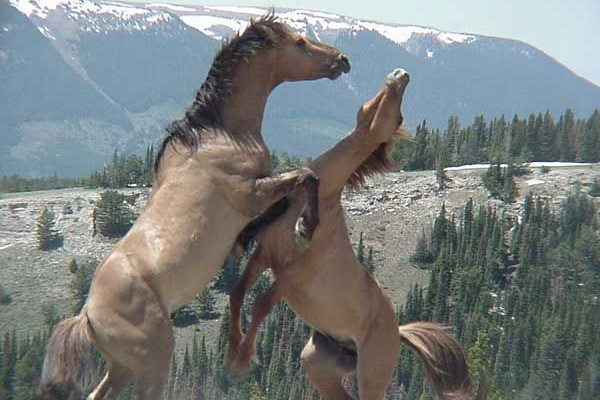 Mustang defends his group. Source: Bureau of Land Management, Public Domain, via Wikimedia Commons.
Mustang defends his group. Source: Bureau of Land Management, Public Domain, via Wikimedia Commons.
Who decides where to go?
The stallions are not the only ones who decide where the herd goes and stays. A mare from the group starts to move away. The group goes along, our Mustang follows at an appropriate distance. Some time later, another mare decides that the grass further away looks better. The rest of the horses follow suit. It's not like only one older mare decides where Mustang and the group goes. Instead, all his group mates occasionally play route planner, some more successfully than others.
When they have a nice place to graze, Mustang can occupy himself with the task that takes up most of his day: About half the day he spends eating. Horses are made to eat small bits throughout the day. We see this in our domestic horses as well. Horses that spend a large part of their day without roughage have a much higher risk of health problems in their gastrointestinal system, such as gastric ulcers.
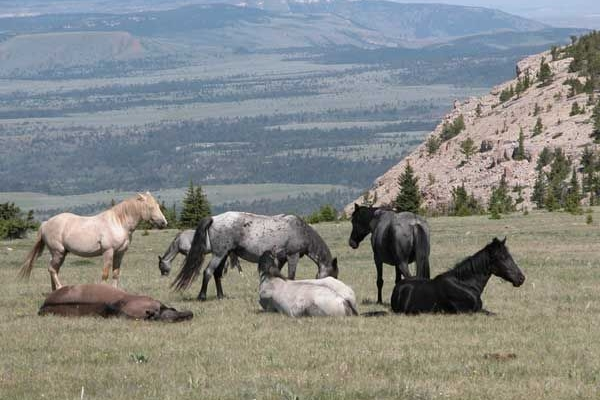 Time to rest & enjoy what’s for dinner Source: Bureau of Land Management, Public Domain, via Wikimedia Commons.
Time to rest & enjoy what’s for dinner Source: Bureau of Land Management, Public Domain, via Wikimedia Commons.
"Invasive species"
Still, not everyone likes the fact that Mustang and its kind eat so much. They are thought of by many as so-called ‘invasive’ species, due to that they supposedly don't occur naturally in the North American eco-system, but were brought there by humans many years ago.
Since then, they have been doing very well: They have few enemies in the wild and the population is increasing. Because there are so many of them, and they mainly graze in the same places, the land gets damaged. Native plants disappear, and scarcity of food and water occurs. Food and water that native wildlife also needs. In addition, farmers want their livestock, which also roam these ‘public lands’, to have enough to eat as well.
So a month later, Mustang got a promotion. To control the amount of horses in the herd, horses are captured every year. Part of the herd, including the previous lead stallion, was captured. This way, Mustang could take over the remaining mares and become a lead stallion himself. This allows Mustang to produce offspring without worry.
Several things can happen to his captured group members. A few will be adopted by humans, and turned into excellent riding horses. Unfortunately, there are too few adopters for the large groups of mustangs being captured. However, another bunch of mares will be made infertile, and then released. This leaves a group of horses that are not suitable for adoption, but are also not allowed back into the herd. Some will therefore go to so-called ‘Long-term Holding Pastures’: pieces of land where the horses can stay permanently.
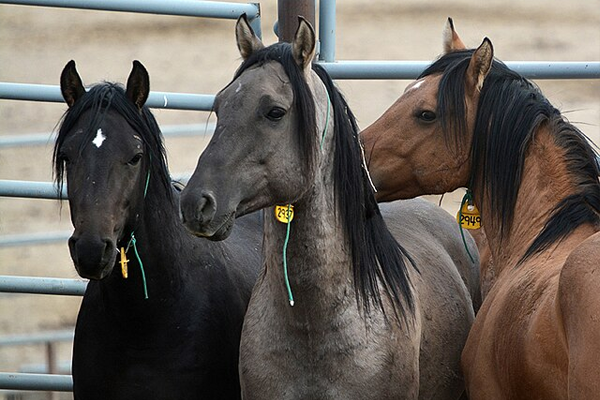 The fate of the previous lead stallion. Source: Cabachaloca, CC BY-SA 4.0, via Wikimedia Commons.
The fate of the previous lead stallion. Source: Cabachaloca, CC BY-SA 4.0, via Wikimedia Commons.
Some of Mustang's mares will not produce offspring despite never being captured: Another way of population control is through the use of vaccines that render mares infertile. This method has only been used quite recently, but can be applied with relatively little stress. Mares do not need to be trapped and/or sedated for this method, which is a good thing for the mares. Hopefully, Mustang will not miss the extra foals!
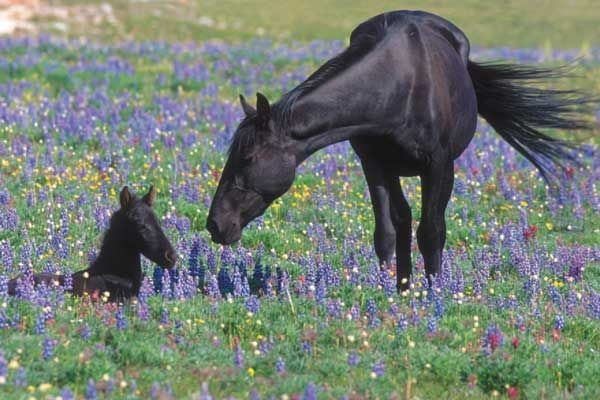 Mustang did it: offspring! Source: Bureau of Land Management, Public Domain, via Wikimedia Commons.
Mustang did it: offspring! Source: Bureau of Land Management, Public Domain, via Wikimedia Commons.






 MutedUser
Quirinal
says:
MutedUser
Quirinal
says: MutedUser
StarHorses66
says:
MutedUser
StarHorses66
says:
 MutedUser
MV16
says:
MutedUser
MV16
says: MutedUser
Levvez
says:
MutedUser
Levvez
says:
